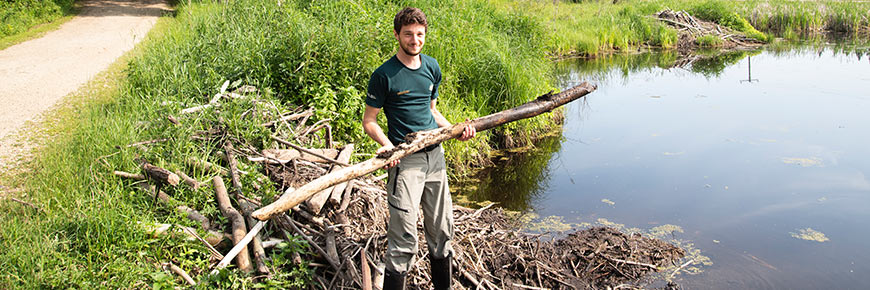
Beaver management
Elk Island National Park
The historical importance of beavers in the development of Indigenous cultures and economy, European settlement, and the eventual foundation of Canada, led Parks Canada to choose the beaver as its official icon. Beavers remain culturally important for many groups of people today. The beaver population in Elk Island National Park is relatively large and healthy (there are currently several hundred active beaver colonies in the park, each of which typically contains 5 to 7 individuals). Beavers are a keystone species in Elk Island because they play a critical role in regulating and influencing key ecological processes such as wetland creation, fire, herbivory, predation, and forest succession. Unfortunately, habitat and landscape modifications by beavers sometimes conflict with human objectives, particularly where changes to water levels threaten infrastructure, such as roads or trails. Beaver management in Elk Island is necessary to mitigate human-beaver conflicts and promote human-beaver coexistence.
Most of the beaver ponds in the park do not pose any threat to human infrastructure and therefore do not require any active management. At sites where beaver activities do threaten infrastructure, water levels are managed so that they are adequate to support beaver colonies and other aquatic organisms, but low enough to prevent damage to infrastructure. In most cases, this is accomplished by opening plugged culverts, putting small breaches in beaver dams, and by installing water-flow devices that beavers have difficulty blocking. Management actions are done in a way that ensures changes in water levels are not larger or more frequent than plants and animals up and downstream have adapted to.
Related links
- Date modified :